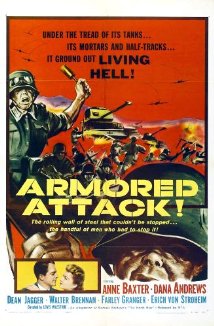The German invasion of Russia transformed Stalin from one of Hitler’s allies to one of ours, and made necessary the production of propaganda films — this one, “Mission To Moscow”, “Song of Russia” — to bring everyone around to the new way of thinking. Hollywood liberals seem to have been keen to have the chance to make a pro-Soviet film.
“The North Star”, therefore, has an impressive list of credits. Lewis Milestone directs a rather poor Lillian Hellman script, while the music is provided by the unusual combination of Aaron Copland and Ira Gershwin.
The story takes place in a Ukrainian farming village, where ordinary people are determined to resist the foreign aggressors, just as they are in “Dragon Seed” (1944) where the Japanese invasion of China is resisted by Chinese peasants Katherine Hepburn and Walter Huston.
Since this is a propaganda film, and just as realistic as “Dragon Seed”, we see a lot of scenes of village life before war breaks out. It’s an endless round of singing, dancing, picnicking, and accordion-playing. Everyone is expected to sing in this film, and that includes Farley Granger, Walter Huston, and Dana Andrews, who accompanies himself on balalaika. Listen closely for the jolly folksong about Soviet children eating too much jam. Girls always have flowers in their hair, and people never walk when they can gaily skip down the road. This is a typical Soviet village in the same way that the Von Trapps are a typical Austrian family.
In reality, the pre-war years in the Ukraine saw several million in the countryside starve to death during the artificial famine which was part of Stalin’s forcible collectivization policy. In the area where this fairytale village is found, many of the locals welcomed the Germans as liberators.
The pre-war scenes in “The North Star” are certainly ridiculous, but in spite of everything they do manage to have a certain goofy charm. The film changes dramatically for the worse once war breaks out. Most of the film consists of extended battle sequences which are never very convincing or persuasive, where something poignant — villagers having to set fire to their own houses — will be followed by something stupid — cavalrymen leaping from horses through windows at Germans.
Anne Baxter at the end, in a scene intended to evoke Tom Joad in “The Grapes of Wrath”, delivers an inspiring speech from her cart. It’s a little embarrassing to sit through, but by that point in the film, you’ve gotten used to it.

